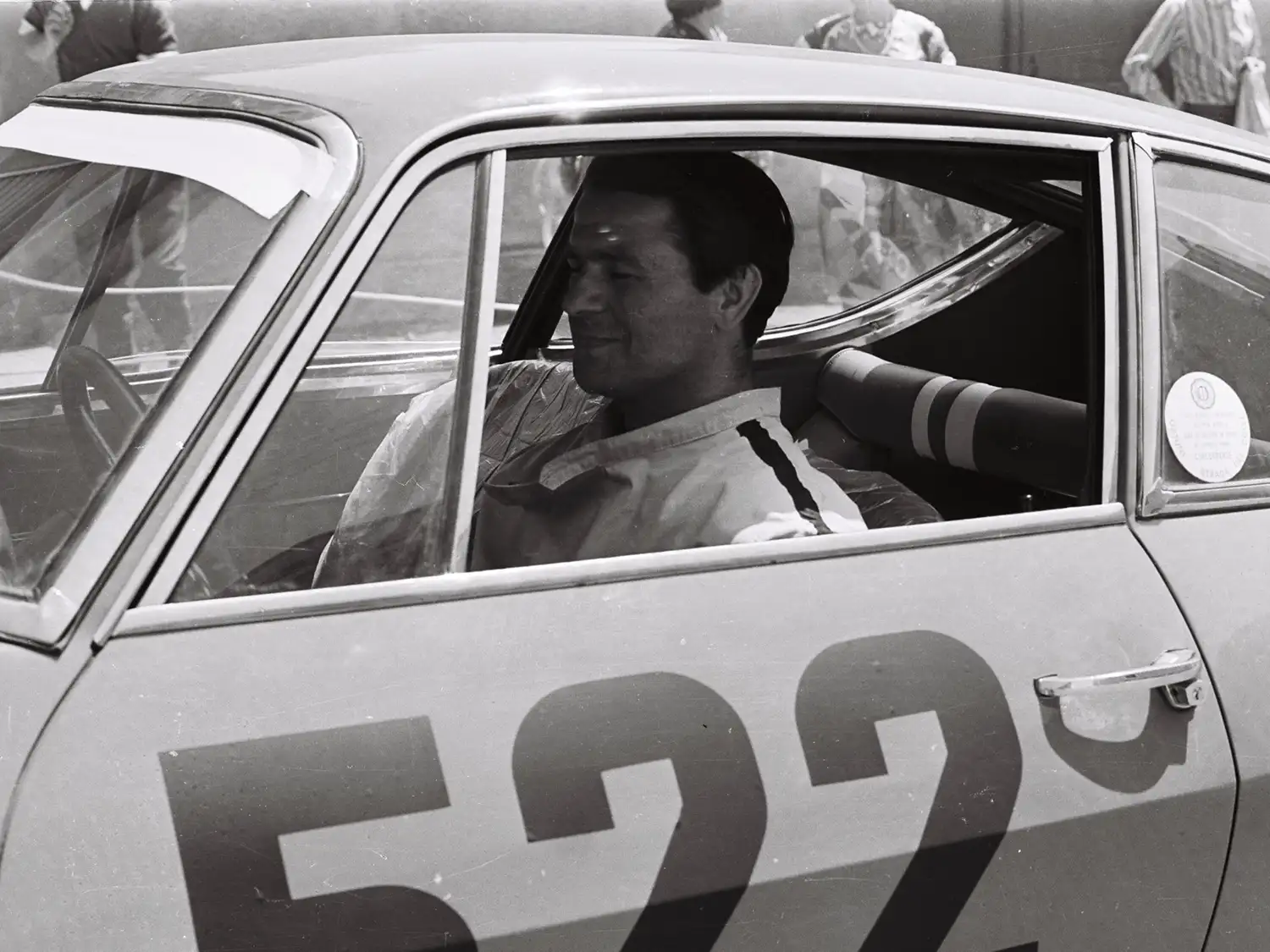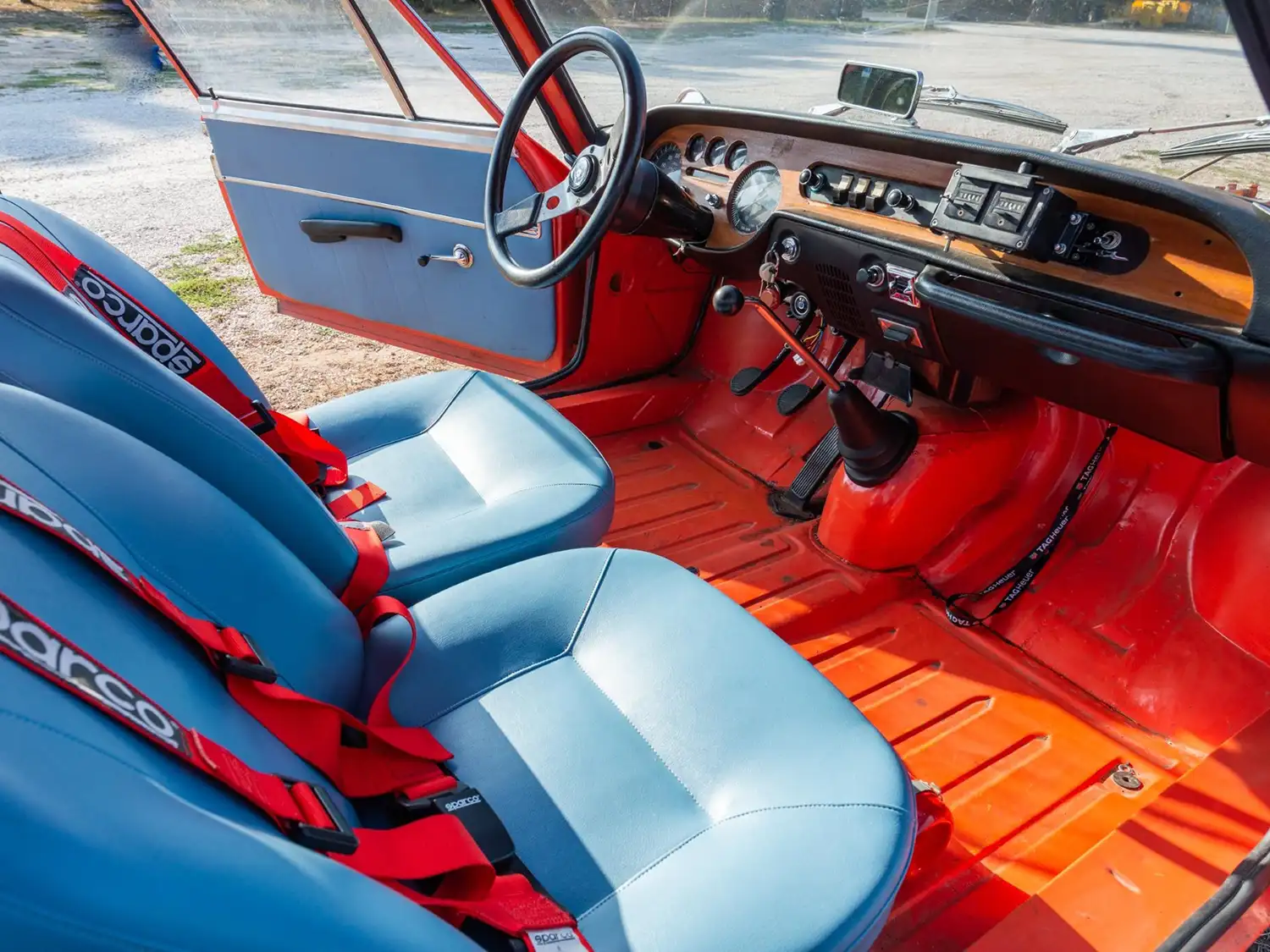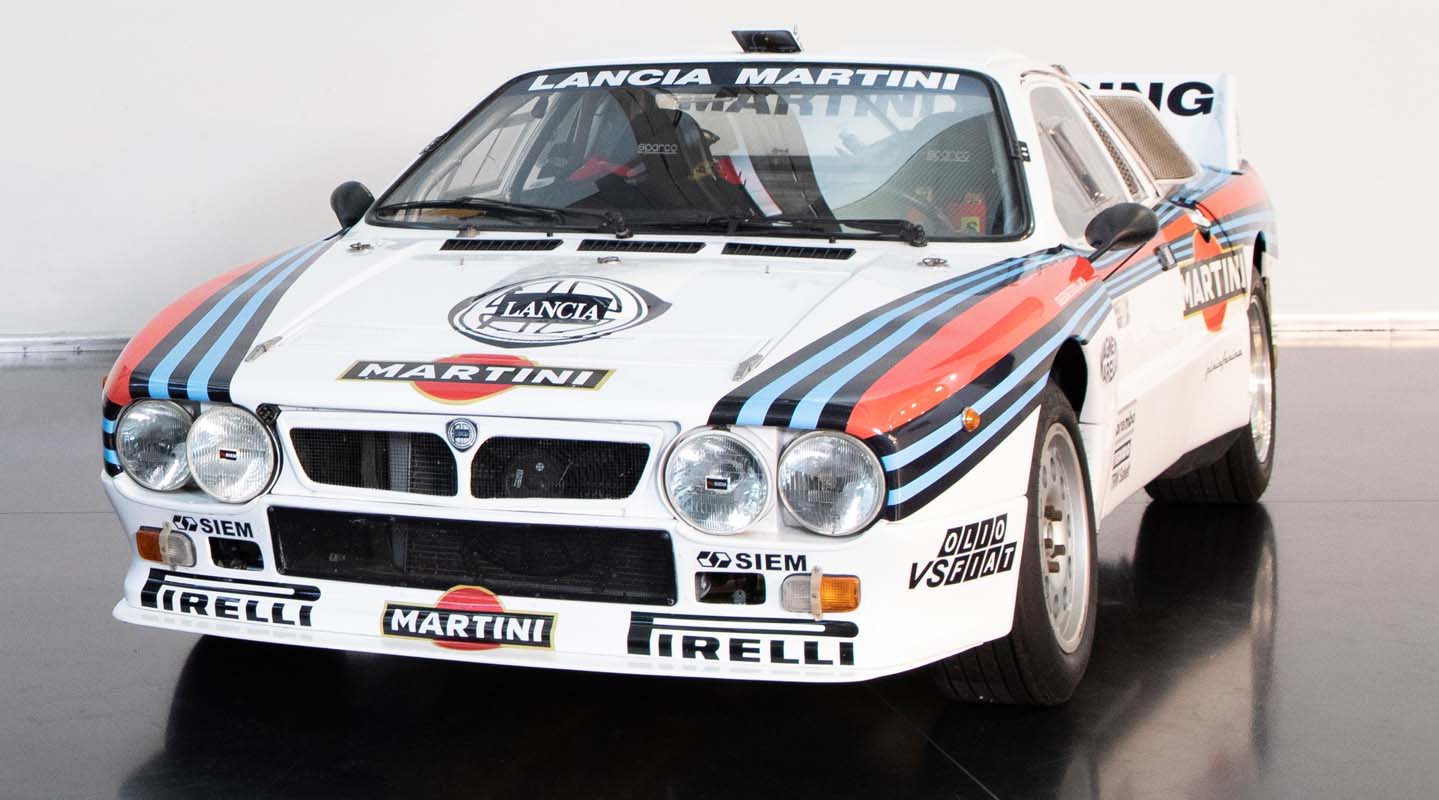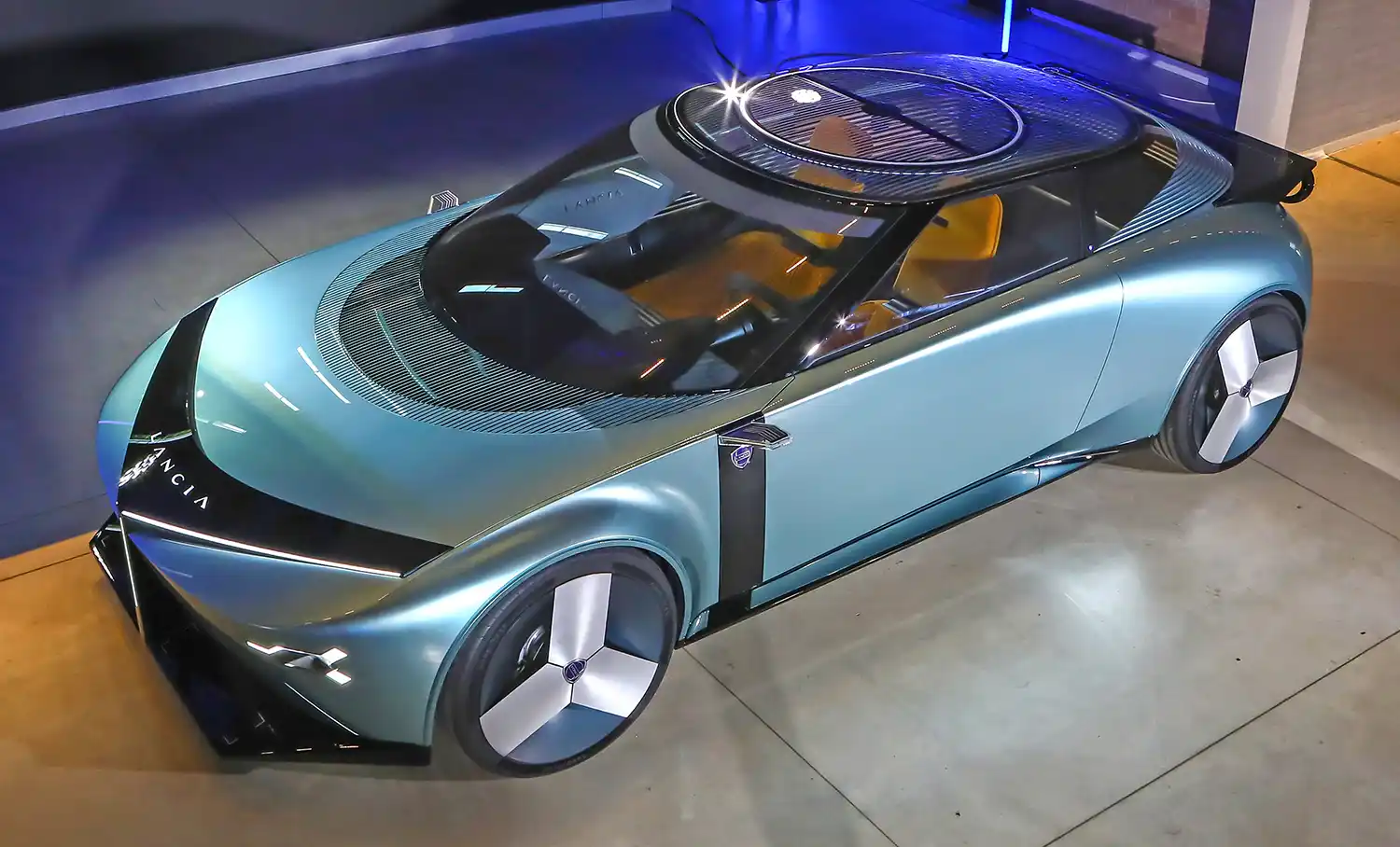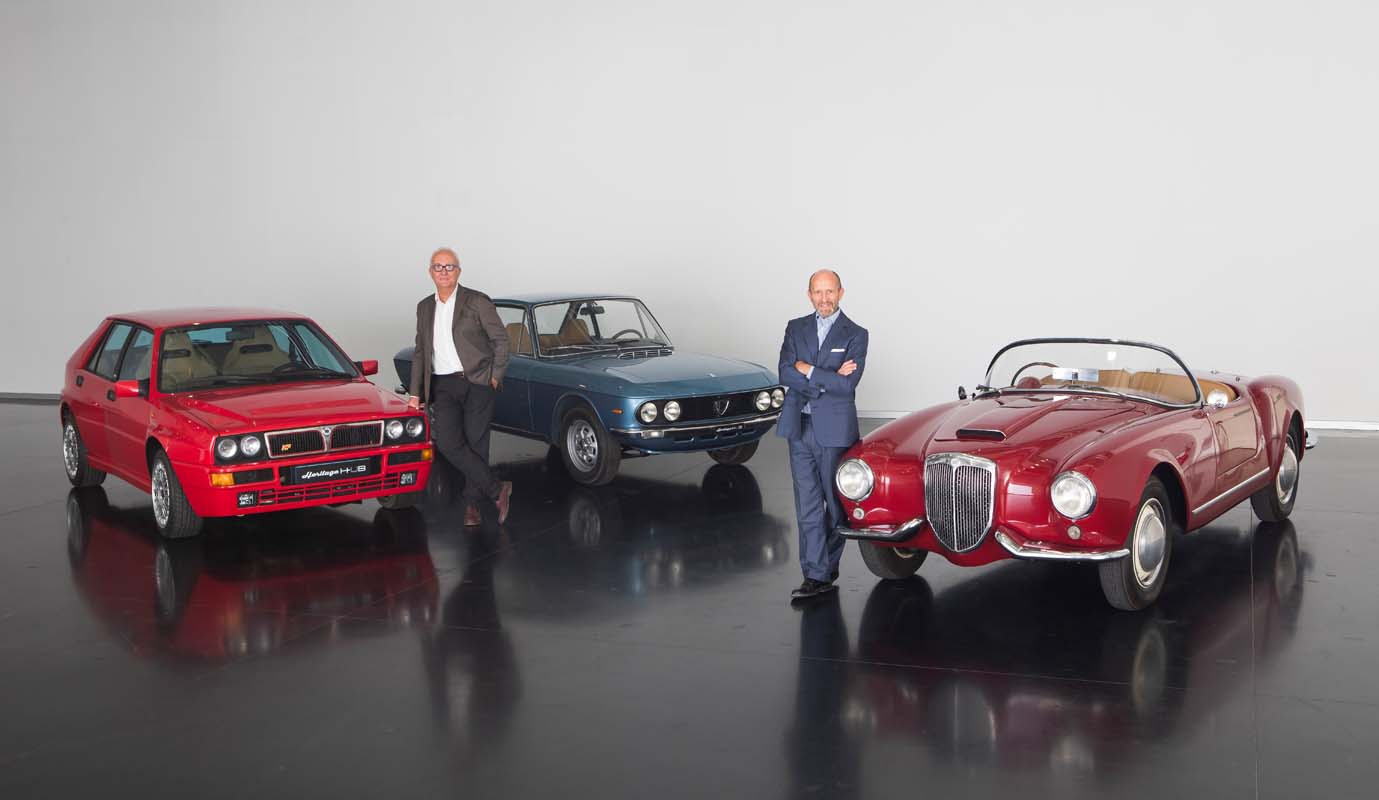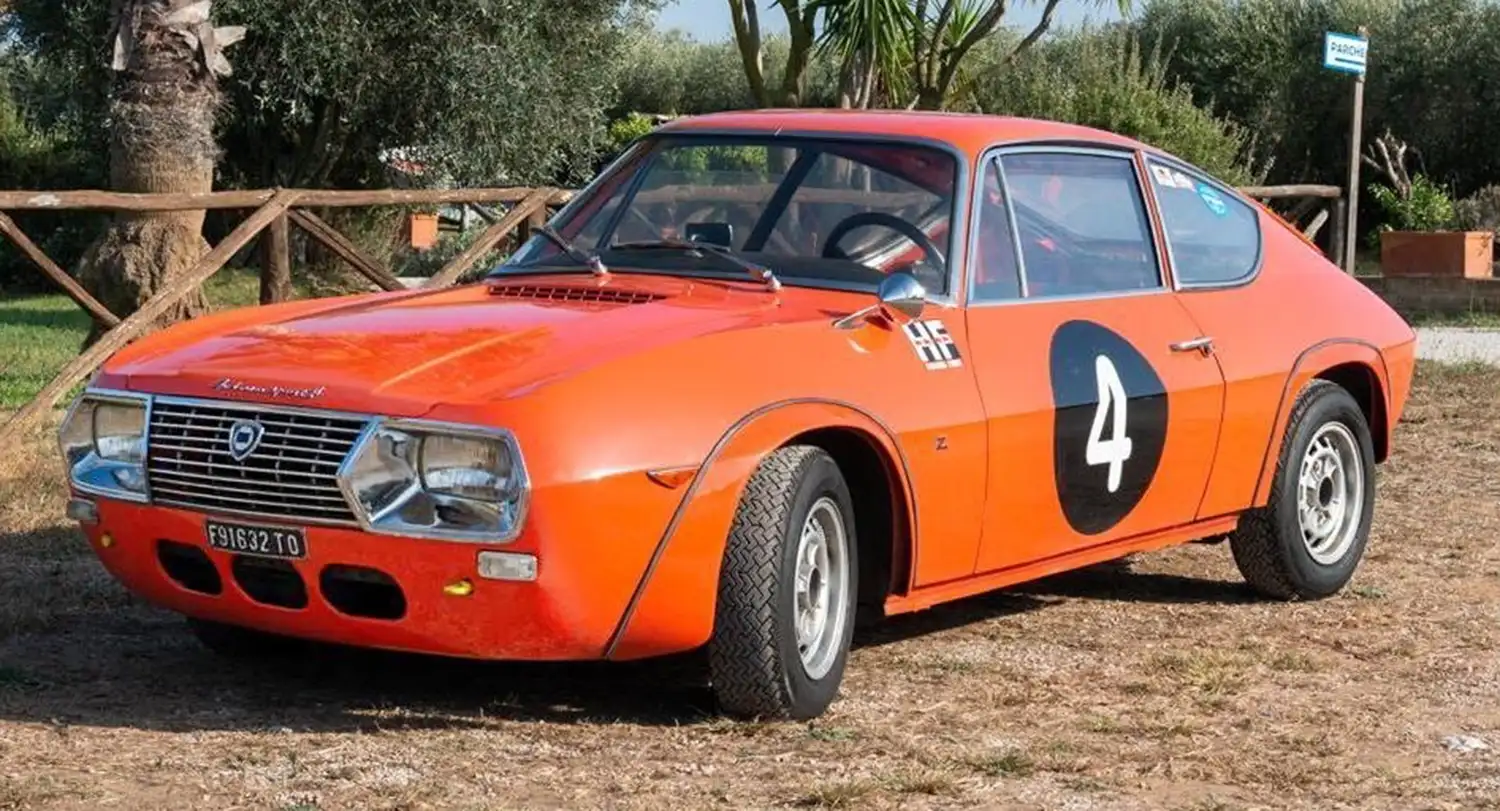
At the end of the 1960s, the director of the Lancia Racing Department, Cesare Fiorio, ordered special examples of the Fulvia from Zagato. Based on the 1300 version of the Lancia Fulvia Sport, which was already a success for the famous Italian coachbuilder, these were to feature lightened bodywork. Thus was born one of the most significant competition cars of its class, the Fulvia Sport 1.3 Competizione.
With the 1,300cc 4V engine and aluminium alloy bodywork riveted to the steel bodyshell, the racing version of the Fulvia Sport Zagato was light, powerful, and lively to drive with its front-wheel drive setup. In the golden days of hillclimbs, rallies and great endurance races, this model sent shivers down the spine, and what’s more, it had a massive dose of Italian style, with the inimitable aesthetics of the Milanese body shop founded in 1919 by Ugo Zagato. All of the bodywork, including the engine compartment, is lightened by holes of different sizes, crafted with great artisan precision and the windows are not glass but much lighter four mm plexiglass, except the windscreen.
Intended for private teams and drivers, this race version was produced in incredibly limited numbers – just 25 according to the most credible sources. Three cars went to the Squadra Corse HF, with another three heading to the Jolly Club Milano. The Fulvia Sport Competizione had a rich list of results and was most at home in the Targa Florio, where the cars were class winners in 1968, 1969 and 1971. Today it is believed that 19 survive in circulation, of which one, with chassis number #1905, belonged to the Messina gentleman driver Angelo Rizzo and is coming up for auction on Car & Classic, Europe’s largest online marketplace for classic and niche vehicles.
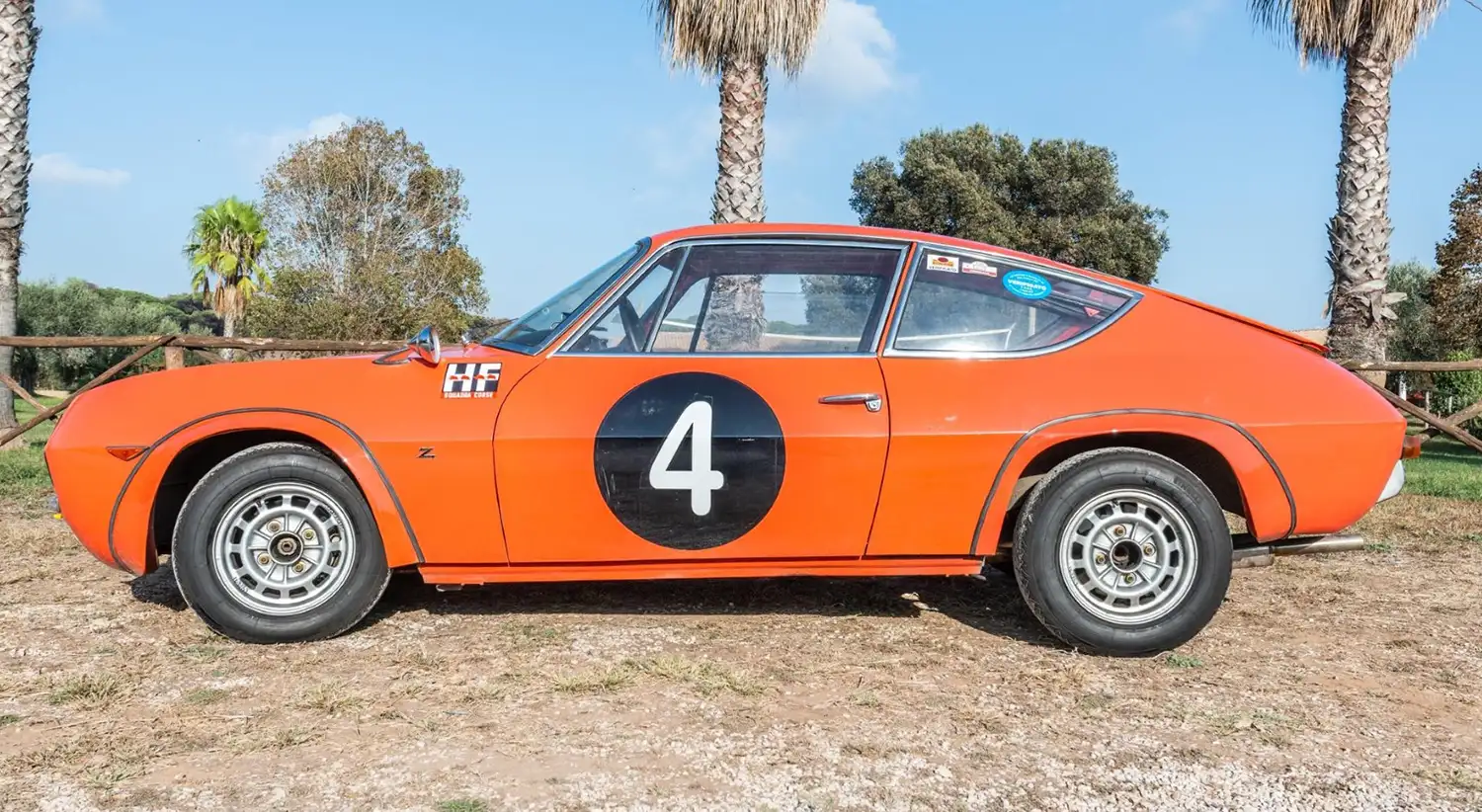
Maintained in excellent condition and retaining perfect performance, the Fulvia auction is set for Wednesday 10 January with an auction estimate of 140-170 thousand Euros. This example preceded, within the same production batch, the famous Fulvia Sport Competizione with its 1600cc engine and chassis number #1911, which ran in 1969 at the 24 Hours of Daytona and the 12 Hours of Sebring, winning its class both times.
In 1968, when he was assigned the car by Cesare Fiorio, Angelo Rizzo had already been crowned the Italian Touring Car category champion in the 1300cc class in a Fulvia HF. Known by the name Radec, with which he participated in countless national and foreign races, the driver was part of the Scuderia Tridente. He had the Competizione prepared by Facetti in Cormano (Milan), after which he immediately took part in the Targa Florio in 1968 and 1969. With this car, Radec also achieved an excellent result in 1968 at Catania-Etna, then the longest hillclimb in Italy, where he finished sixth overall.
At the end of the season, after several other excellent results, he sold the car to driver Emanuele Parrinello, who competed in it throughout 1969. During this period some slight modifications were made to the car, including the elimination of some elements of the front grille and the plexiglass caps of the front headlights. This is also the period in which the car ended its career due to the decision of the owner not to adapt to the new directives for Group 3. It was then repainted in elegant Lancia Blue until an owner in the early nineties restored it to its original appearance.
The car today presents in the characteristic San Siro Red livery that Zagato originally chose. It features four adjustable shock absorbers, four new Pirelli CN36 tyres, five original 13” Campagnolo rims and five (new) Cromodora 14×6 rims with new Vredestein 185/14 all-season tyres. The 10/37 gearbox was prepared by Officina Ratto and is also suitable for road use but the short competition gearbox used for hillclimb racing also remains with the car and is in perfect working order. The Competizione features two 35 Dell’Orto carburettors with trumpets, oil radiator, battery switch, Brantz rpm detector and front leaf springs on roller bearings as per the original build.
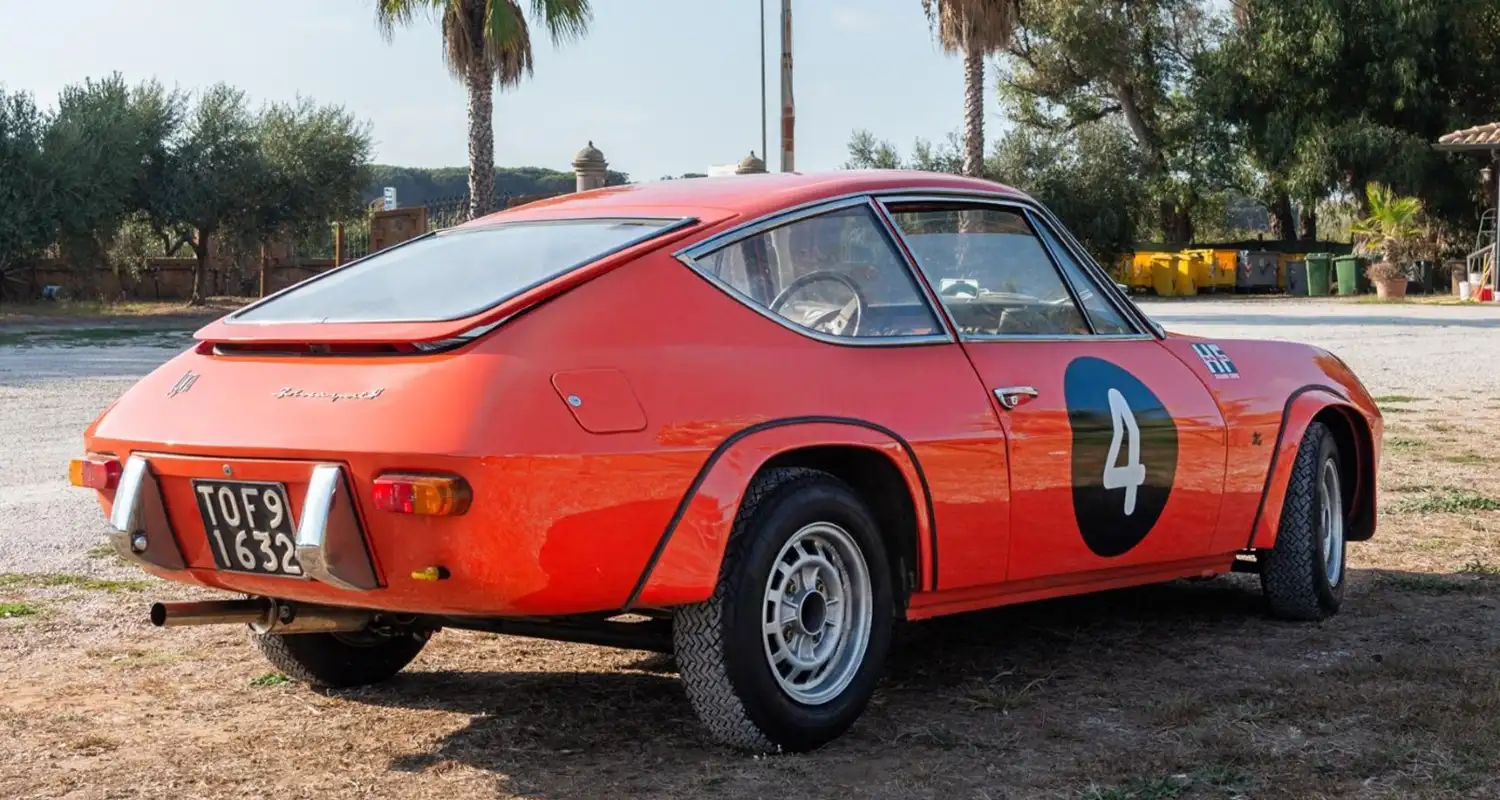
Inside, the trim and seats are original, in the characteristic light blue imitation leather adopted by Zagato for the Competizione. In addition to the Ferrero Sandro Munari steering wheel, the Momo steering wheel used by Radec in competitions is sold separately. The exhaust is a new Inox Aros with Gr4 manifold. The car is also equipped with two side exhausts as used in racing.
The number four shown in white on a black circle on the sides was assigned to this Fulvia in the 1968 Targa Florio, in which it was the second car to start. The car’s participation in the race is widely documented in the “Zagato Fulvia Sport Competizione” bible written for Nada Editore by Carlo Stella and Bruno Vettore, who was also one of the owners of this example in the late 1990s. The current owner is a direct descendant of the founder of Lancia, Vincenzo, and son of the engineer Francesco De Virgilio, who developed the first-ever V6 engine, which equipped the Lancia Aurelia. Scrupulous and very attentive to car maintenance, the enthusiastic custodian keeps the Fulvia Sport Competizione in an air-conditioned garage.
In general, the history of this fascinating racing car, which keeps intact all the wonderful flavour of the competitive events of its time, is proven with historical race photos, entry lists and competition results, as well as various chronicles of the period. Speaking of the press, this car is also mentioned in several magazines, including Auto d’Epoca of May 1998 and Automobilismo d’Epoca of May 2023. The list of the most recent races in which it has participated also includes prestigious names such as the 2019 Coppa dei Fiori and the 2020 Floriopoli Cup, while in 2022 the car was seen at the famous Vernasca Silver Flag dynamic elegance competition and, the following year, at the Historical Grand Prix of Rome in the heart of the capital.
Car & Classic’s auction of its 1968 Lancia Fulvia Sport Competizione Zagato begins on 10 January, and runs until 17 January. It is expected to fetch between 140-170 thousand Euros.


